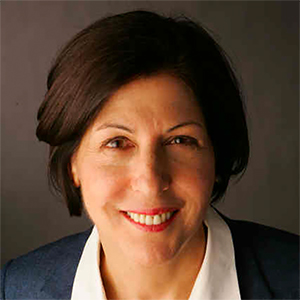What is Hayat Tahrir al-Sham? And how did the Islamist group evolve into a key player in Syria’s civil war?
Published in Political News
A major offensive has seen rebel groups in Syria retake the country’s second city, Aleppo – and demonstrated the growing prominence of the Islamist group Hayat Tahrir al-Sham in the 13-year-long civil war.
The surprise advance was led by members of Hayat Tahrir al-Sham, fighting alongside Turkish-backed groups opposing the rule of President Bashar al-Assad.
While the offensive – the most significant fighting in recent years – may be the first time that many outside of Syria have heard of the Islamist group, Hayat Tahrir al-Sham has been growing in reputation and capabilities over a number of years. As an expert on the behavior of Islamist militant groups in the region, I have watched Hayat Tahrir al-Sham evolve from an offshoot of al-Qaida in Syria into a formidable player in the ongoing conflict. It followed a significant shift in the group’s strategic operations that has seen it become less concerned with global jihad and more focused on attaining power in Syria.
Hayat Tahrir al-Sham has its roots in the early stages of the Syrian civil war, which began in 2011 as a popular uprising against the autocratic government of Assad.
The group originated as an offshoot of the Nusra Front, the official al-Qaida affiliate in Syria. Hayat Tahrir al-Sham was initially recognized for its combat effectiveness and its commitment to global jihadist ideology, or the establishment of strict Islamic rule across the Muslim world.
In a pivotal shift in 2016 under the leadership of Abu Mohammed al-Jawlani, the Nusra Front publicly cut ties with al-Qaida and adopted the new name Jabhat Fateh al-Sham, which means “Front for the Conquest of the Levant.”
The following year, it merged with several other factions in the Syrian war to become Hayat Tahrir al-Sham, or the “Organization for the Liberation of the Levant.”
This rebranding aimed to move away from al-Qaida’s global jihadist agenda, which had limited the group’s appeal within Syria. It allowed Hayat Tahrir al-Sham to focus on issues specific to Syrians, such as local governance, economic issues and humanitarian aid.
Despite these changes, Hayat Tahrir al-Sham’s core ideology continues to be rooted in jihadism, with the primary objective of overthrowing the Assad government and establishing Islamic rule in Syria.
This strategic shift was partly born of pragmatism. To keep power over the territories it controlled, Hayat Tahrir al-Sham leaders concluded the group needed to minimize international opposition and effectively integrate into the broader Syrian revolutionary movement.
In other words, it needed to balance its radical Islamist origins with the demands of local governance and political engagement.
Since 2017, Hayat Tahrir al-Sham has been the prevailing force in Idlib, the final significant rebel stronghold in Syria.
Over the years, the group has solidified its control in the region by functioning as a quasi-governmental entity, providing civil services and overseeing local affairs, despite reports of human rights abuses.
In recent years, Hayat Tahrir al-Sham’s propaganda has emphasized protecting Syrian territory and its people from the Assad government.
This has helped the group enhance its position among local communities and other rebel groups.
In an effort to further burnish its image, Hayat Tahrir al-Sham has ramped up its public relations efforts, both at home and abroad. For example, it has engaged with international media and humanitarian organizations to negotiate – and film – aid deliveries to the areas it governs.
These initiatives showcase a commitment to civilian welfare and distance the group from the violence typically associated with jihadist movements.
The recent military offensive, during which Hayat Tahrir al-Sham-led rebels swiftly captured significant parts of Aleppo and pushed toward the city of Hama, marks another significant strategic pivot. It signals a revitalization of Hayat Tahrir al-Sham’s military objectives and its ability to adapt to changing circumstances.
Hayat Tahrir al-Sham’s thinking in launching an advance now has likely been influenced by a blend of regional and local dynamics. The Assad government’s increasing vulnerability has become evident of late, marked by economic deterioration and corruption.
Many areas in Syria remain only nominally under state control, and the central government is heavily reliant on support from allies such as Russia and Iran.
These allies, however, have been preoccupied by their respective conflicts against Ukraine and Israel, potentially diluting their support for Syria.
Compounding Assad’s weakness are the diminishing capacities of Hezbollah and Iranian forces. Both have been crucial in propping up Assad throughout the civil war. But Israeli strikes in Lebanon, Syria and Iran have potentially weakened Hezbollah and Iran’s ability to support Syria. And this reduction in support may have tipped the military balance in the civil war toward opposition groups.
Moreover, Hayat Tahrir al-Sham and other rebel groups are facing a Syrian military hit by low morale, high desertion rates and inadequate military equipment. Disarray among government forces has made it difficult for Assad to respond effectively to the renewed assault by opposition forces.
In contrast, Hayat Tahrir al-Sham has bolstered its military capabilities. Having survived various military campaigns, the group has consolidated power and professionalized its forces. Hayat Tahrir al-Sham has established a military academy, reorganized its units into a more conventional military structure, and created specialized forces adept at executing coordinated and strategic attacks – as evidenced by the recent advance in Aleppo.
Moreover, Hayat Tahrir al-Sham has managed to gain some local support by positioning itself as a defender of Sunni Muslim interests. The inability to find a political solution to the Syrian crisis has only fueled local resentment to the Assad government, creating a supportive base for any force that actively opposes the regime.
With growing support on the ground, a more professional military and a political wing focused on governance, Hayat Tahrir al-Sham has evolved from a jihadist offshoot into a major player in Syria – a development that has huge implications for the internal dynamics of the war-torn country.
This article is republished from The Conversation, a nonprofit, independent news organization bringing you facts and trustworthy analysis to help you make sense of our complex world. It was written by: Sara Harmouch, American University
Read more:
US military presence in Syria carries substantial risks, but so does complete withdrawal
Bouncing between war-torn countries: Displacement in Lebanon and Syria highlights cyclical nature of cross-border refuge
Anti-Syrian violence in Turkey complicates normalization process between Turkey and Syria
Sara Harmouch does not work for, consult, own shares in or receive funding from any company or organization that would benefit from this article, and has disclosed no relevant affiliations beyond their academic appointment.





























































Comments